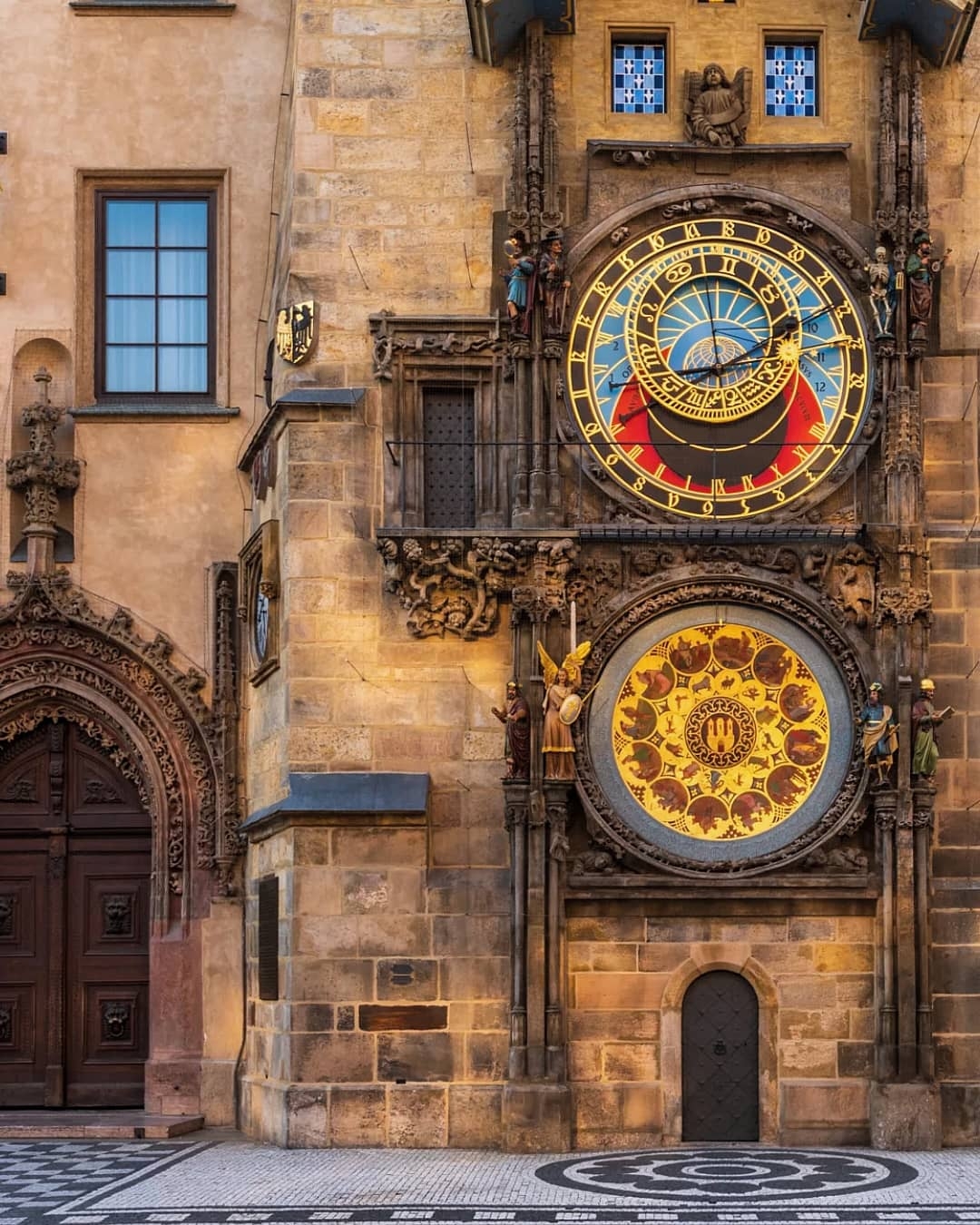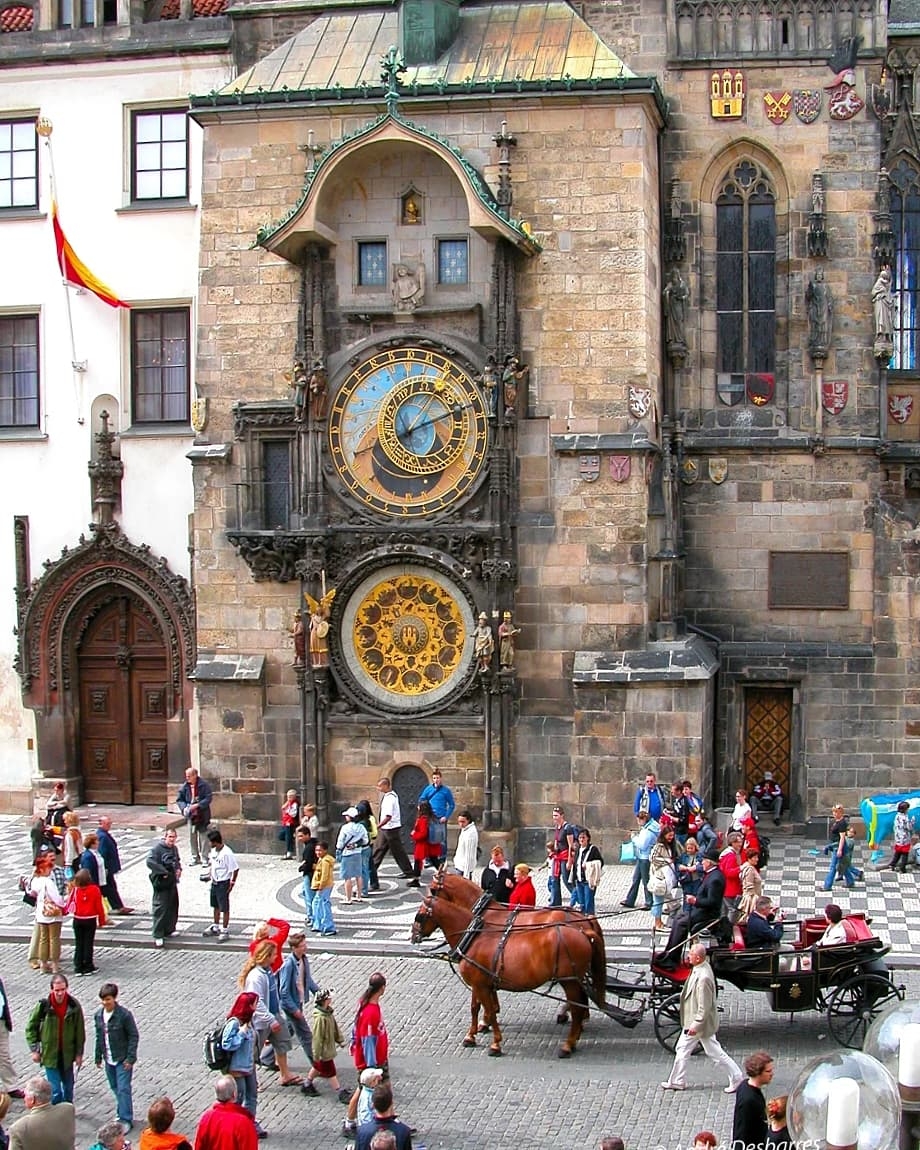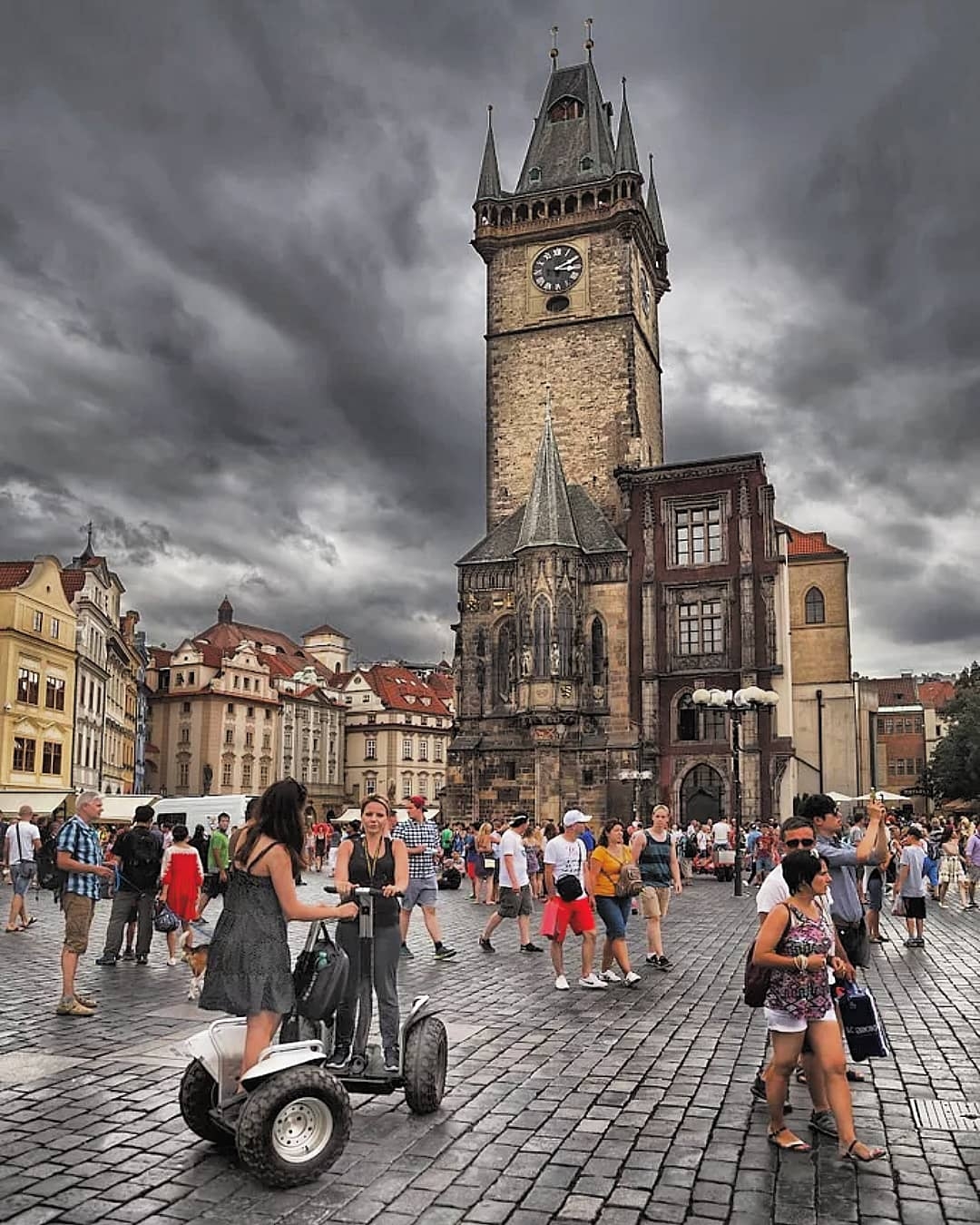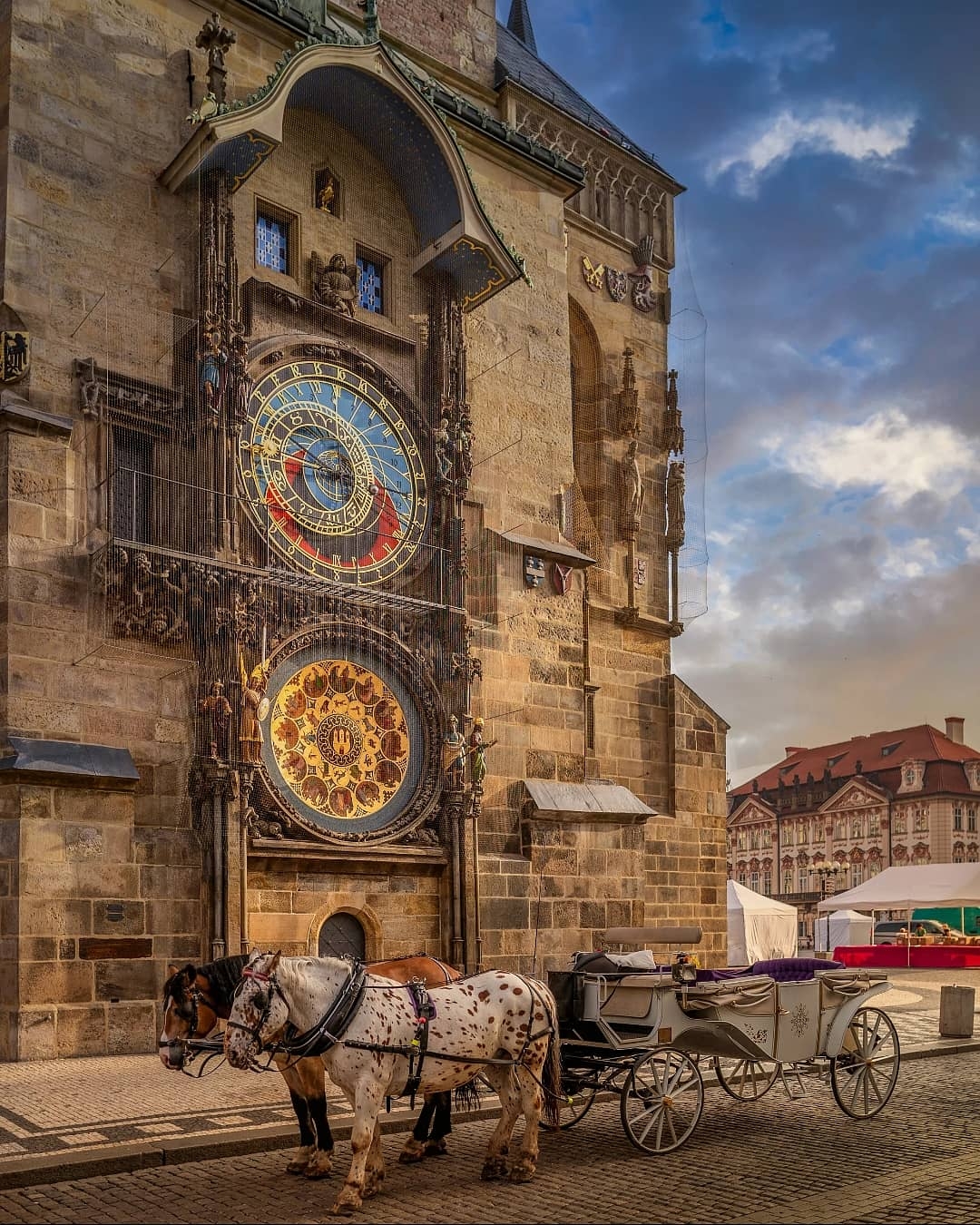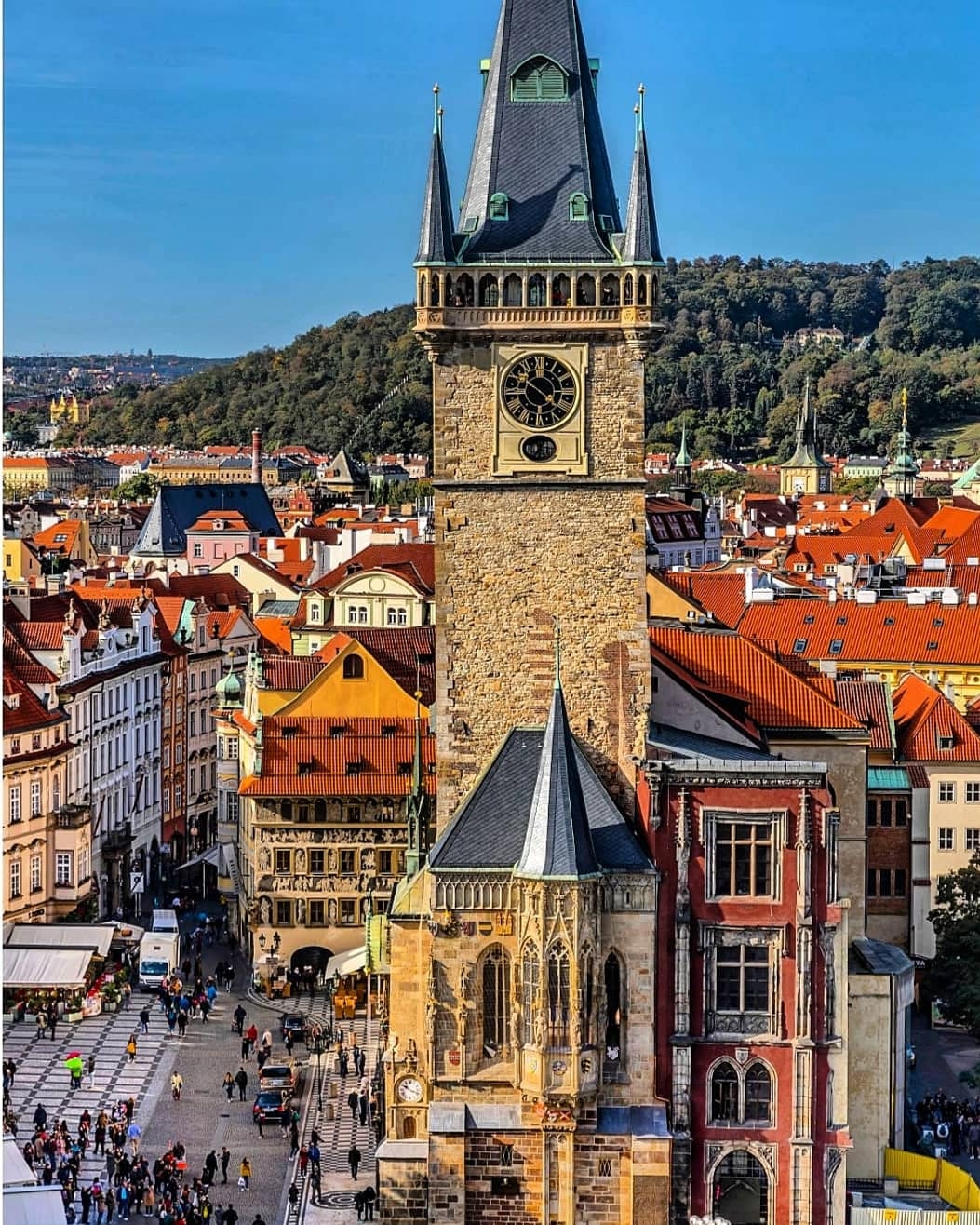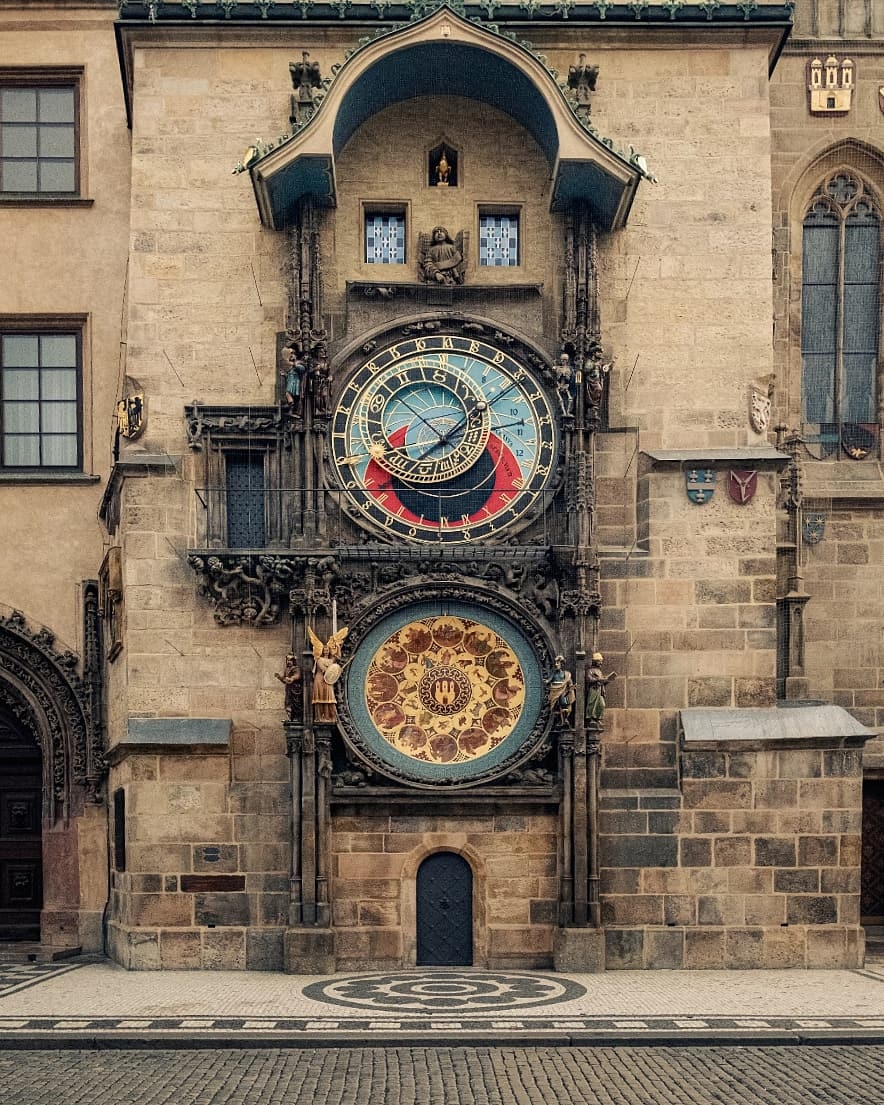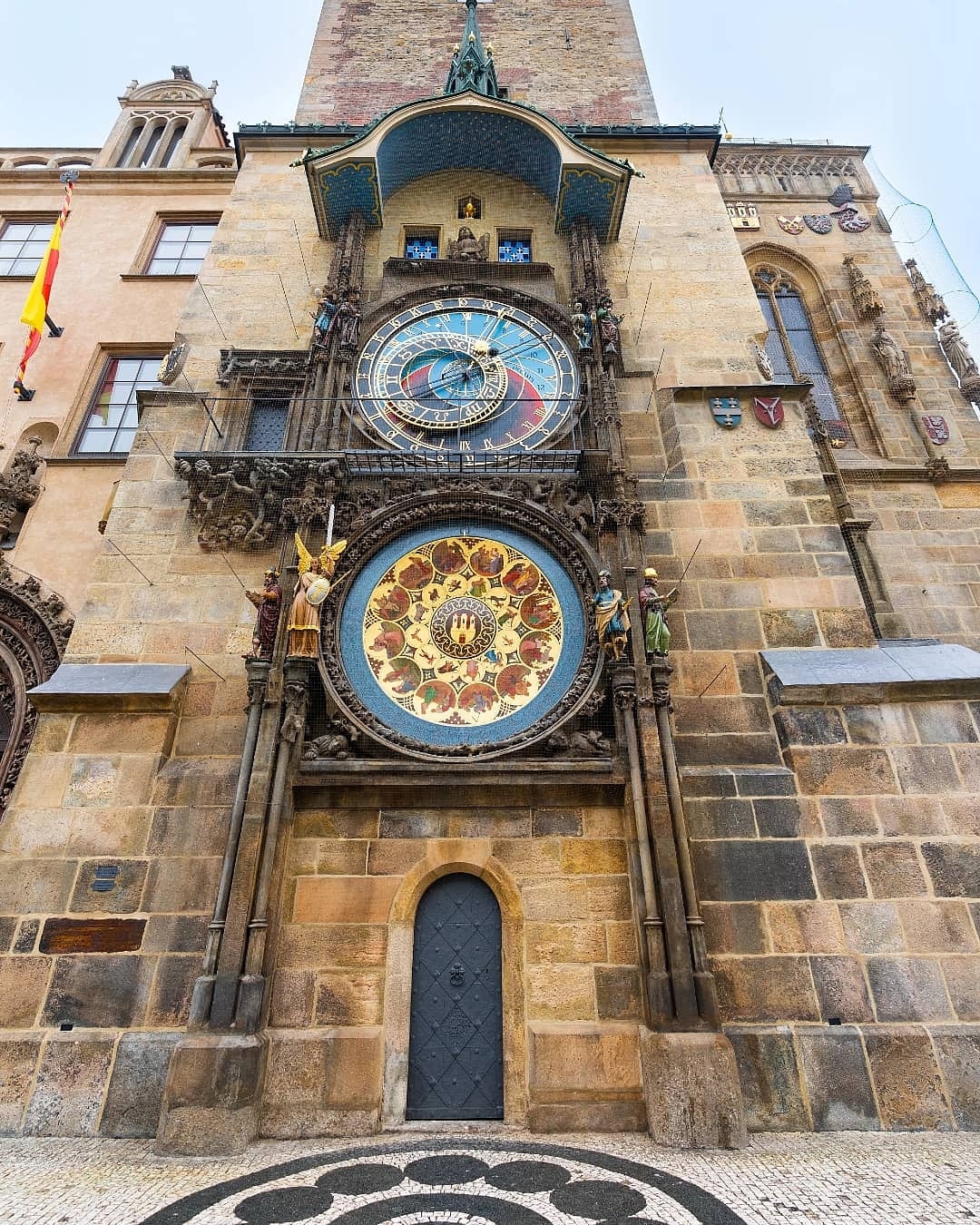EVERY HOUR, HUNDREDS OF TOURISTS FROM ALL OVER THE WORLD WITH CAMERAS AT THE READY GATHER IN FRONT OF THE OLD TOWN HALL TO ENJOY A FASCINATING MECHANICAL PERFORMANCE, WHICH FOR 600 YEARS HAS
BEEN ONE OF THE GREATEST TREASURES OF THE CITY.
Legends about the origins of the Prague Astronomical Clock are many. The most famous one, however, is that it was built by Master Hanuš in 1410. The city councillors at that time were so delighted with the clock that they later began to fear that Master Hanuš would build one like it for another European city. Therefore one dark night they had him blinded, and thus the wondrous clock remained only in Prague .Nobody knows whether it was really or not, but the fact is that after the death of Master Hanuš (Jan of Růže)the clock stopped for longer periods than it ran. Over the long history of chimes repeatedly threatened to dismantle. For the fi rst time this has happened in 1787. At the regular repair chimes had no money, so the Prague authorities decided to dismantle them for scrap.Watchmaker Jan Landsberger off ered to repair the astronomical clock at his own expense. Clock again started to go,but the astronomical calendar was not in motion. In 1861,history repeated itself. So that a unique mechanism has not been sold, a clockmaker Ludwig Heinz with Romuald Božek organized to raise money for reconstruction. Fortunately, Heinz Ludwig managed to repair the clock. Since then, he was appointed as a chief clockmaker Prague’s astronomical clock, and after his death took care of the clock his descendants. Chronometer, which controls the clock today,was made a talented mechanic Romuald Božek. Despite the fact that the chronometer is almost 200 years, it lags
behind by only half a minute per week. In 1866, the astronomical clock was working again, and in fact as we know them today.In the past, the chimes were seriously damaged several times, it was also during the Hussite wars, and during the Second World War. The Prague treasure suff ered its most recent scars during the Prague Uprising on May 8, 1945. The fi re in the Town Hall, caused by shots from German tanks, damaged the clock mechanism and burnt the fi gures of the apostles.The machinery was repaired and the Orloj started working again in 1948, but only after signifi cant eff ort. The Orloj is composed of three main components: the astronomical dial, representing the position of the Sun and Moon in the sky and displaying various astronomical details; a clock-work hourly show “The Walk of the Apostles” and other moving sculptures; and a calendar dial with medallions representing the months, made by the famous Czech painter Josef Mánes in 1865.Every hour, when they hit the chimes, there is a small representation in the tradition of medieval puppet theater:fi gures on the sides of the clock became animated and two windows open up to reveal 12 apostles greeting the city. On the sides of the clock you’ll see a skeleton ringing a bell, a Turk shaking his head, a miser with a purse full of money, and Vanity looking in a mirror. The whole performance ends with the crowning of a golden rooster and the ringing of the huge bell at the top of the tower. Figures of the Apostles appeared on the clock in 1659,before the windows were in prison cells, where prisoners were kept. Today’s fi gures are copies made in 1948 by Czech sculptor Vojtech Sucharda. The originals are in the Museum of the City of Prague.

